The Tohoku Region is located in the northeastern part of Japan’s main island. It is characterised by its rich nature, scenic beauty, and many delicious food and specialty products. Sightseeing cruises, skiing adventures, and blue lakes are a small example of what it has to offer. In this article, we will introduce what the Tohoku Region has to offer to tourists interested in Tohoku travel.
Table of Contents
- The Tohoku Region has 6 Prefectures
- Tohoku Travel, Introducing Sightseeing Spots in the Tohoku Region
- Tohoku Food and Local Specialties to Try
- The Tohoku Region’s Traditional Crafts and Specialty Products as Souvenirs
- Many Festivals in the Tohoku Region
- To Close
Introducing The 6 Tohoku Prefectures

The Tohoku Region is made up of 6 prefectures: Aomori, Akita, Iwate, Yamagata, Miyagi and Fukushima. The Ou Mountains run through the centre of the prefecture, with parallel mountain ranges and rivers flowing through them, creating basins and plains in each valley. The Tohoku Region can be divided into 2 sides, the Sea of Japan side and the Pacific Ocean side, with both sides experiencing different climates and weather.
On the Sea of Japan side, there are mountains on top of the volcanic belt, and the area is characterised by having many hot springs near the sea and along the coast. The area experiences heavy snowfall and snow piles up nicely, so winter sports like skiing and snowboarding can be enjoyed. On the other hand, the Pacific Ocean side is a mountainous area with some mountains protruding out to sea forming ria coasts and limestone caves.
The Tohoku Region, which is made up of 6 prefectures, has very different characteristics and attractions depending on the location. It is recommended that you do some research before travelling.
Aomori Prefecture 青森県

Aomori Prefecture is the northernmost prefecture in Tohoku. It snows a lot in winter, and the highest record of accumulated snow is 566cm at Sukayu in Aomori City. Based on that, it is easy to tell that Aomori Prefecture has a climate that is very cold in winter, and there are times where the temperature drops below zero.
Aomori Prefecture is popular as a summer getaway due to its cool and pleasant climate even during summer. If you plan to visit, the best time is from spring to autumn when there’s no snow and the weather is pleasant.
Akita Prefecture 秋田県
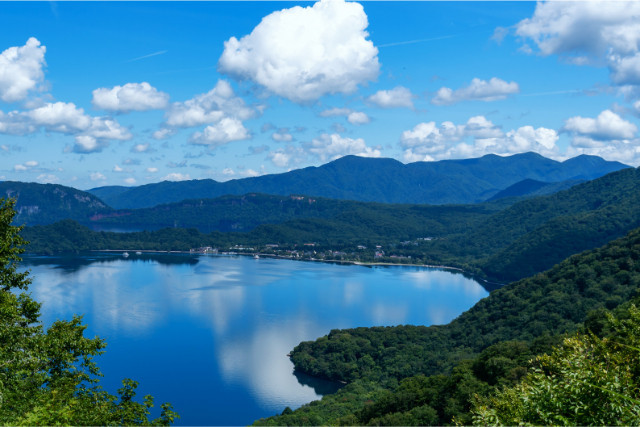
Akita Prefecture faces the Sea of Japan and is characterised by a climate unique to northern countries, that is short summers and long winters. Just like Aomori Prefecture, it is an area that experiences heavy snowfall in winter. Aomori Prefecture is extremely famous for its rice production and sake, which is made from rice. If you like Japanese alcohol, you should definitely visit. The area is also a volcanic zone which means many hot spring areas, even some along the coast. It is recommended for hot spring lovers who can try different types of hot springs.
Iwate Prefecture 岩手県

Iwate Prefecture faces the Pacific Ocean and is located directly below Aomori Prefecture. It is the second largest prefecture in Japan, and thanks to its vast lands, their agriculture industries are thriving. Their fishing industry is also doing well with large amounts of seaweed and abalone harvests, and salmon catches. It is a place where you can enjoy both the fruits of the mountains and the sea, so it is recommended as a travel destination for those who want to enjoy good food.
Iwate Prefecture has 4 distinct seasons so you can really feel the changing of the seasons. You can enjoy hanami (cherry blossom viewing) in spring, sea swimming in summer, autumn foliage in autumn, and winter sports in winter. It is a prefecture where you can enjoy your trip regardless of the timing of your visit.
Yamagata Prefecture 山形県
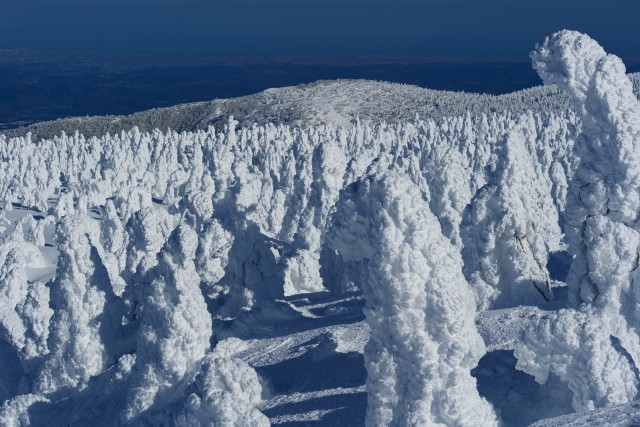
Yamagata Prefecture is located below Akita Prefecture. Although it is classified as part of the Tohoku Region, it is also an area close to the Kanto Koshinetsu Region (関東甲信越地方). Facing the Sea of Japan, it is famous as a hot spring area and for its richness in nature. In winter, you can also see "snow monsters (樹氷)", which is a phenomenon that occurs when frozen snow piles up heavily on trees due to the cold seasonal winds.
There are many shrines and temples in Yamagata Prefecture, so it would be a good idea to tour some of them. There are also temples and rivers where Matsuo Basho, one of Japan's most famous haiku poets, is said to have visited and composed haiku at.
Miyagi Prefecture 宮城県

Miyagi Prefecture faces the Pacific Ocean to the east, and the Ou Mountains to the west. The land is blessed by nature, and its fishery, agriculture, and livestock industries are active. Miyagi Prefecture has a relatively mild climate compared to the rest of the Tohoku Region, and is characterised by having lighter snowfall, though it does get enough snow in winter to enjoy winter sports. In summer, water sports such as river climbing and kayak cruises are recommended.
Miyagi Prefecture is also where renowned Japanese military commander Date Masamune was born and raised. There are many sightseeing spots in Miyagi that are perfect for history lovers.
Recommended Reading:
Fukushima Prefecture 福島県
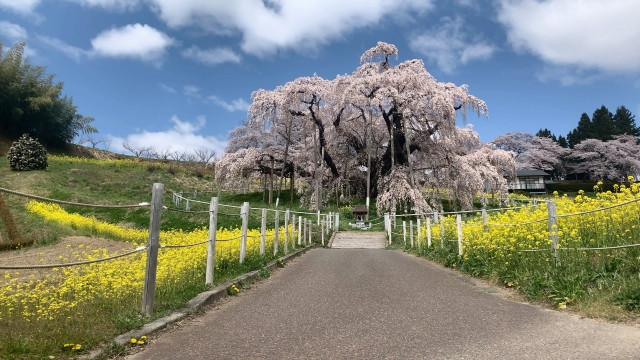
Fukushima Prefecture is the southernmost prefecture in the Tohoku Region. It is adjacent to Gunma Prefecture, Tochigi Prefecture, and Ibaraki Prefecture in the Kanto Region. Fukushima Prefecture is roughly divided into 3 regions: Hamadori which faces the Pacific Ocean, Nakadori which is in the centre of the prefecture, and Aizu which is near the Ou Mountains. Each of these regions have their own characteristics and climate.
Hamadori has a beautiful flowing river, and if you visit the natural park, you can witness the changing of the seasons when visiting at different times in the year. Due to the pleasant climate all year round, there is very little snowfall. Nakadori is a basin where agriculture is thriving. The Aizu region has mountainous areas and basins, and a lot of snow in winter. You can experience a different charm depending on the area you visit.
Writer's Pick
Tohoku Travel, Introducing Sightseeing Spots in the Tohoku Region
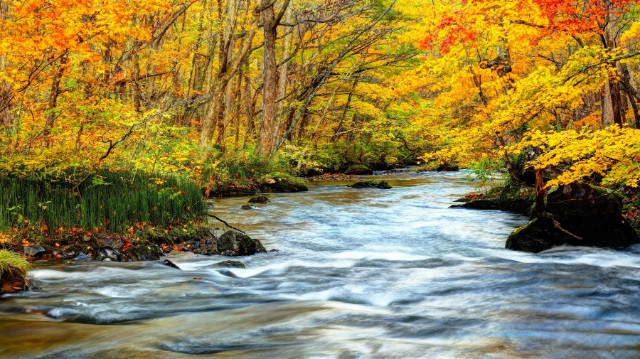
There are many tourist spots in the Tohoku Region that are highly recommended for tourists visiting Japan. For those who want to visit places aside from the usual Tokyo, Osaka, and Kyoto, we recommend Tohoku as your next vacation spot. Here is a compiled list of sightseeing spots that you should visit.
Matsushima Bay (Miyagi Prefecture)
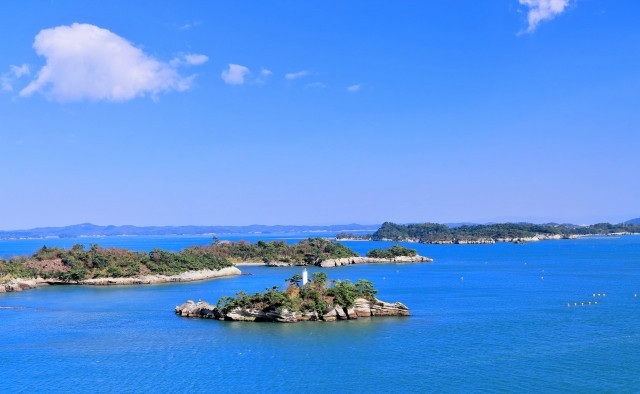
Matsushima Bay is one of “The Three Views of Japan (日本三景)”, or “Nihon Sankei”, the other 2 being Miyajima in Hiroshima Prefecture and Amanohashidate in Kyoto Prefecture. It is located in Matsushima Town, Miyagi Prefecture, but is easily accessible from Sendai City, a major city and popular tourist spot in Miyagi Prefecture. Sunrise, sunset and moonrise seen here are very beautiful making it a popular photo spot. A sightseeing cruise is highly recommended.
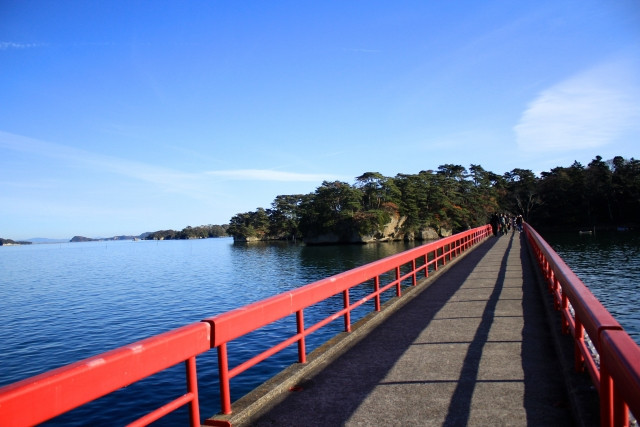
Other highlights of Matsushima Bay include Kanrantei Tea House which is a historical building where you can enjoy matcha and wagashi with a view of the bay, Fukuurajima an island with many viewing platforms for panoramic views, and Matsushima Fish Market where you can enjoy Matsushima local delicacies. Make sure to try Matsushima Oyster which is said to be the best oysters in Japan.
Hirosaki Castle (Aomori Prefecture)
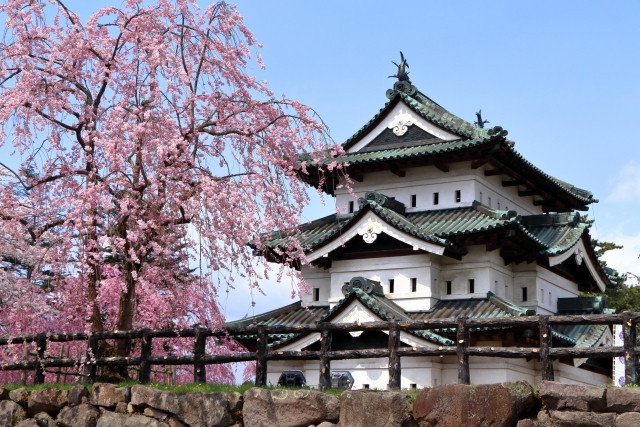
Hirosaki Castle is located in Hirosaki City in Aomori Prefecture. It is a recommended visit for those who like historical buildings and cherry blossoms. Hirosaki Castle is the only castle tower in the Tohoku Region, and was built in the Edo period. The castle gate and castle tower, which still retain the look of older days, are worth seeing.

Various kinds of cherry blossoms, mainly Yoshino cherry trees, are planted around the castle, making it a popular cherry blossom viewing spot in spring. In particular, the “flower raft (花筏)”, or sakura carpet moat, formed by cherry blossom flower petals floating on the surface of the castle’s moat is a rare sight to behold.
Hirosaki City is also known as “The City of Apples”. Apple pie and apple dishes are local delicacies in the city, and there is also Tsugaru traditional cuisine which has a long history. For more about Hirosaki City, read Hirosaki City: Cherry Blossoms and Apples in Aomori-ken.
Nyuto Hot Spring Village (Akita Prefecture)

The Tohoku Region has many hot springs, and is a recommended tourist destination for those who want to experience something unique to Japan. The 7 hot springs in Nyuto Onsen-kyo (乳頭温泉郷) in particular is a place you will enjoy visiting. The 7 hot springs each have their own ryokan accommodation facilities. By purchasing a “Yumeguricho (湯めぐり帖)” pass, overnight guests can bathe in all the 7 hot springs. Alternatively, you can pay separate bathing fees at each hot spring and enjoy a day trip to the area.
Read Akita: Homeland of Japan's Loyal Pup for more places to visit, things to do and food to try in Akita Prefecture. We recommend a trip to Lake Towada which is a large caldera lake and famous for local specialties barayaki which is beef and onions cooked on a hot plate with sweet and spicy sauce, and himemasu which is a type of salmon caught from Lake Towada.
Ryusendo Cave (Iwate Prefecture)

Ryusendo Cave in Iwate Prefecture is recommended for those who want to feel the mysterious force of nature. Ryusendo is a huge limestone cave that is one of the 3 largest limestone caves in Japan with a total depth of over 4,000m. The cave’s transparent blue underground lake, also described as “dragon blue” in colour, is an unforgettable sight once you’ve seen it. Something to keep in mind when visiting, Ryusendo Cave is extremely cold at around 10°C throughout the year, so bring something warm and waterproof to wear when you visit.
Ginzan Onsen (Yamagata Prefecture)
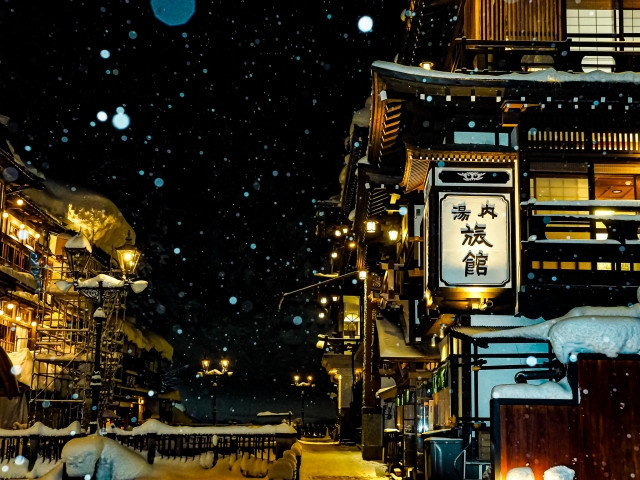
Ginzan Onsen in Yamagata Prefecture, a hot spring resort that once prospered as a silver mine, has been popular since the Edo period. A walking course extends from the hot spring area for you to explore and enjoy the surrounding scenery. There are other walking courses that bring you to other sightseeing spots, in particular places where you can enjoy the cool breeze, like Shirogane Falls and the Silver Mines Cave. In autumn, you can take a walk while admiring the autumn leaves.
Ginzan Onsen is an area with snowfall from around December to mid-March. If you visit at night, you can appreciate the nostalgic and beautiful cityscape illuminated by gas lamps.
Ouchi-juku (Fukushima Prefecture)
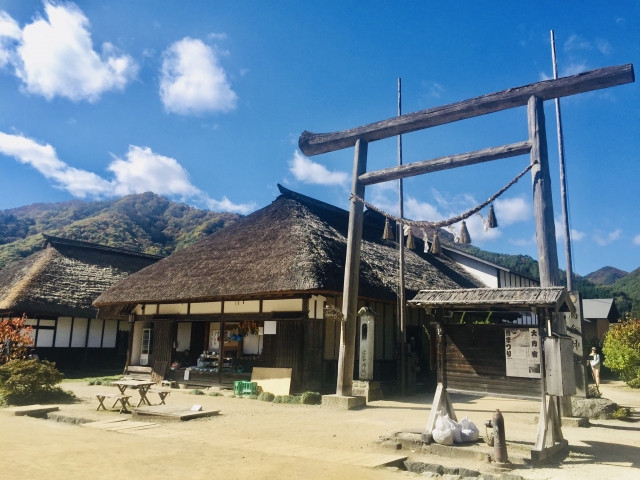
For those who are interested in traditional Japanese architecture, Ouchi-juku (大内宿) in Fukushima Prefecture is recommended. Ouchi-juku prospered during the Edo period as a post town on the Aizu-Nishi Kaido (会津西街道), which runs from Aizu-Wakamatsu City to Nikko City in Tochigi Prefecture.
To this day, Ouchi-juku retains its Edo period appearance with rows of shingle-roofed houses lining the road. Ouchi-juku, where preservation of the townscape for the future generations is heavily emphasised, has been recognised by Japan as being a highly valuable district, and thus been designated as a “National Important Preservation District for Groups of Traditional Buildings (国選定重要伝統的建造物群保存地区)”.
In Ouchi-juku, there is a private house that operates both as a residence and as a shop where you can buy souvenirs and dine-in. There are also accommodation facilities, so if you want to experience staying in an old traditional house, we recommend visiting Ouchi-juku.
Tohoku Food and Local Specialties to Try
In this part, we will introduce the Tohoku Region’s soul foods and local specialties that you should try when visiting the respective prefectures.
Senbei-jiru (Aomori Prefecture)
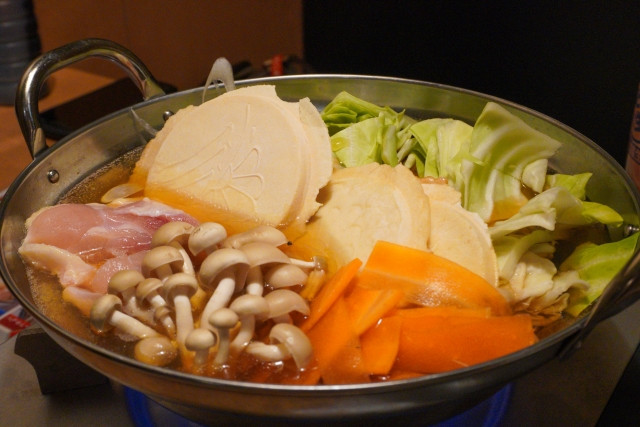
Senbei-jiru, or “rice cracker soup”, is a hotpot dish made by boiling soy sauce-based chicken or pork soup with scallions, burdock, mushrooms, etc. together with Nanbu senbei. It is a local dish from Hachinohe City, Aomori Prefecture, and is mainly a home-cooked dish. In recent years however, it has been served at restaurants and events marketed at tourists.
Senbei is a rice cracker snack that is known for its crispy texture, but when cooked in soup it becomes sticky. Senbei-jiru is a dish that is rarely found in other areas in Japan, so please give it a try when visiting Aomori Prefecture.
Ichigo-ni (Aomori Prefecture)
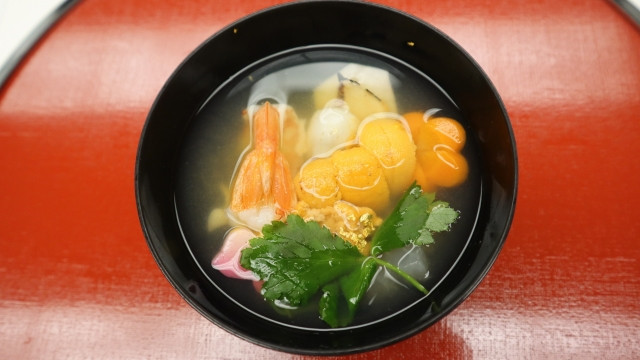
Ichigo-ni is a soup made with sea urchin and abalone. It is an Aomori Prefecture local dish that is loved by its locals. The seafood’s natural flavours that dissolve in the soup gives it a strong umami taste. It is called ichigo-ni because the sea urchin soaked in the milky white soup looks like a wild strawberry; strawberry is called ichigo in Japanese. Remember that there are no strawberries in this dish. Ichigo-ni is also sold in cans, so it is also possible to purchase as a souvenir.
Kiritanpo (Akita Prefecture)
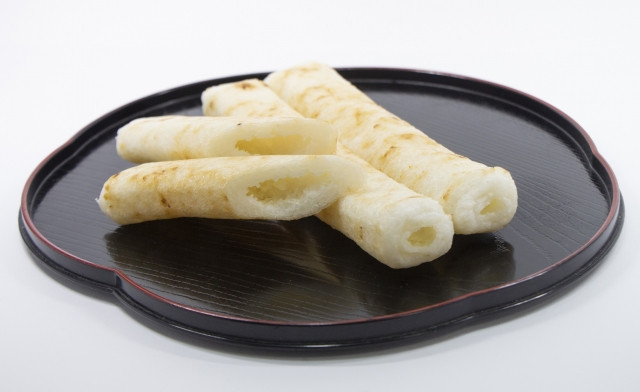
Kiritanpo is made by mashing and kneading hard-cooked rice, and then wrapping it around a stick to grill it, which is called “tanpo”. After grilling, it is removed from the stick and then cut into pieces to make it easier to eat, thus called “kiritanpo”; “kiri” as in cut, so “cut tanpo”. It is a local dish of Akita Prefecture. Originally, kiritanpo was made to be a type of preserved food as provisions for farmers cum lumberjacks who procured wood for the mines. There are many ways to eat it, such as adding it to a hotpot dish, or grilling it with miso. There are many restaurants in Akita Prefecture that serve kiritanpo, so be sure to give it a try.
Inaniwa Udon (AKita Prefecture)
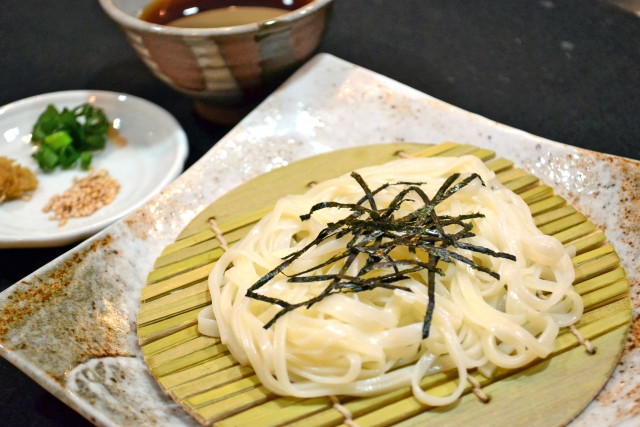
Inaniwa udon from Akita Prefecture is one of “Japan’s 3 Great Udon (日本三大うどん)”. Inaniwa udon, which is characterised by its thin, flat noodles that go down smoothly, is an Akita specialty that is popular nationwide. Made via a complicated manufacturing method, it used to be udon that only people of importance could eat. Udon is generally eaten with a tsuyu that is rich in konbu (kelp) and bonito flakes, but Inaniwa udon is sometimes eaten with a sesame miso flavoured tsuyu. Both are delicious ways to eat them, so why not try when you visit Akita Prefecture?
Morioka Reimen (Iwate Prefecture)
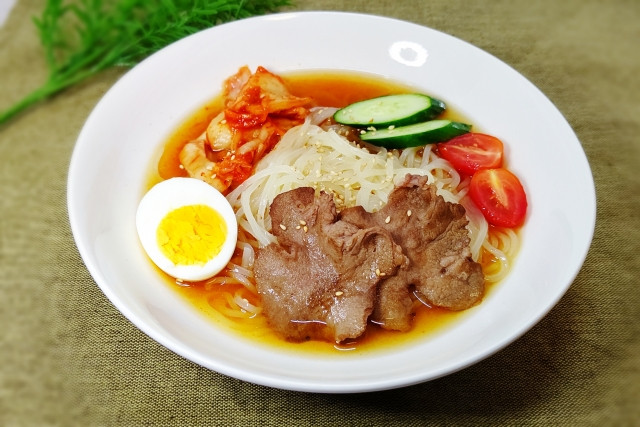
Morioka Reimen, or Morioka cold noodles, is a noodle dish eaten to beat the summer heat. It is a local specialty from Morioka City that is also called the soul food of Iwate Prefecture. Originally a Korean cold noodle dish, it was remade into a Japanese style dish. Morioka Reimen is characterised by its wheat flour noodles that go down easily. The cold soup made from beef bones and chicken bones goes well with the slippery noodles. In addition to Morioka Reimen, Morioka City (and Iwate Prefecture) also has Wanko Soba and Jajangmyeon. Together the 3 noodle dishes are known as “Morioka’s 3 Great Noodles (盛岡三大面)”. Do try them all when visiting Iwate Prefecture.
Wanko Soba (Iwate Prefecture)
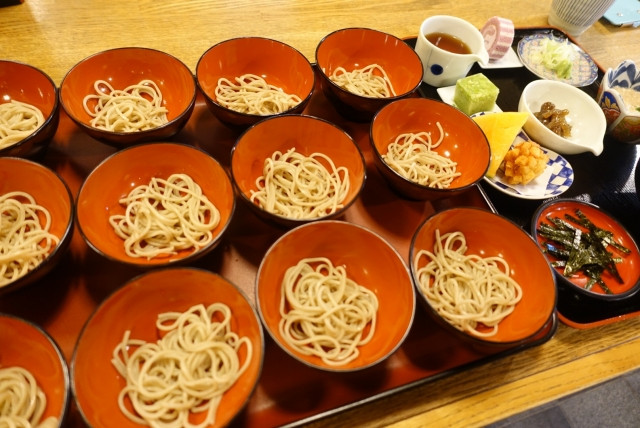
A speciality of Iwate Prefecture and Morioka City is Wanko Soba and its unique way of eating. Served only a bite-sized portion of soba in a bowl, the server will keep on refilling your bowl as you eat. It is a dish where you can feel the spirit of Japanese hospitality, omotenashi. Enjoy eating wanko soba to the encouraging shouts of “hai, don don (はい、どんどん; yes, keep on going)”. If you’ve had your fill, close the lid of the bowl.
One of the charms of Wanko Soba is that you can enjoy conversing with the waiter/waitresses as you eat at your own pace. You will be told how many bowls you ate at the end of the meal, an achievement of sorts that will make for a memorable trip.
Zunda-mochi (Miyagi Prefecture)
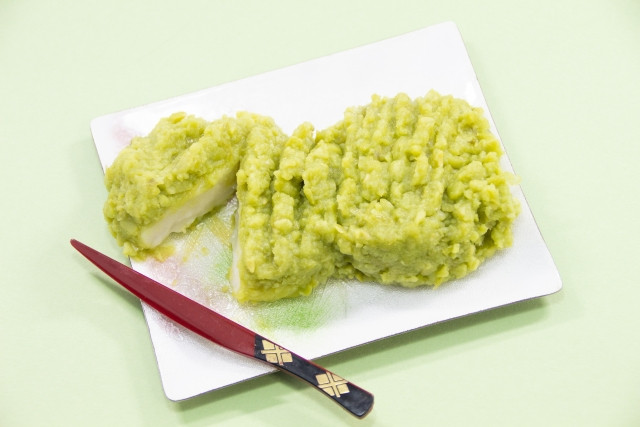
Zunda-mochi is made by mashing green soybeans (edamame), seasoning it sweetly, and coating mochi with it. It used to be made specially for Obon in Miyagi Prefecture, but is now sold and enjoyed all year round.
Mashed edamame itself is called zunda. In recent years, a wide variety of sweets aside from zunda-mochi have been made. There’s zunda soft serve ice-cream, zunda pie, zunda dorayaki, and even zunda shake. It's a sweet that has a unique aroma and texture, so not everyone may like it. If you’re interested in trying it, do give it a taste.
Gyutan (Miyagi Prefecture)

Sendai Gyutan (beef tongue) is a local specialty dish from Miyagi Prefecture where dairy farming is thriving. Despite its thickness, Sendai gyutan is so tender that you can easily chew or bite through it. Eating beef tongue is a part of Japan’s food culture, though it may not be as common overseas. If you're curious about food that you can't find in your own country, try beef tongue.
Imo-ni (Yamagata Prefecture)
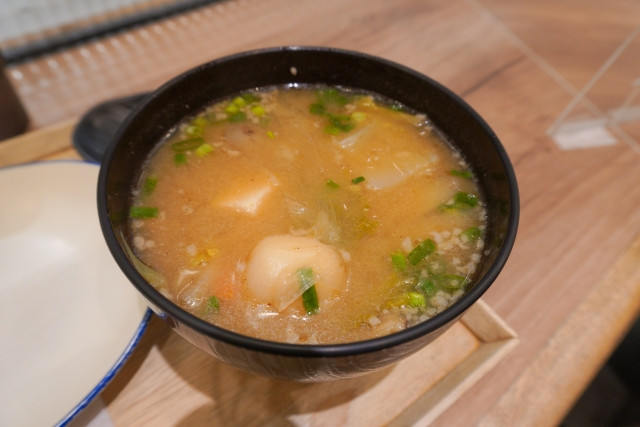
Imo-ni is a soul food that is widely loved throughout Yamagata Prefecture. It is characterised by the different ways of flavouring depending on the area; soy sauce or salt in Yamagata Prefecture, and miso in the rest of Tohoku.
The type of tuber used for imo-ni is taro. Other ingredients such as konnyaku, negi, mushrooms, and burdock are also added. In Yamagata Prefecture, beef is included as a meat ingredient, but there seems to be regional differences with chicken being used in Iwate Prefecture and pork in Fukushima Prefecture.
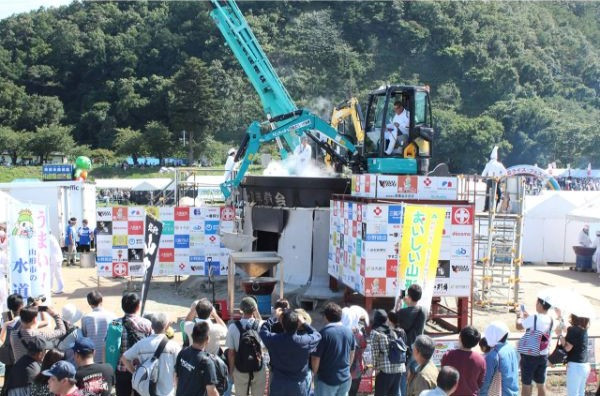
Photo Source: © 山形商工会議所青年部|日本一の芋煮会フェスティバル協議会
During taro harvest season, an event to make imo-ni called “imo-ni kai (芋煮会)” is held at the riverside. This is a seasonal event unique to the Tohoku region, so be sure to look out for it when you visit in autumn. In addition, around September every year, Yamagata Prefecture holds the biggest imo-ni event in Japan called “Imo-ni Festival (日本一の芋煮会フェスティバル)” where imo-ni is made with a giant hotpot and excavators to stir and mix it.
Dashi (Yamagata Prefecture)

Not to be mistaken with dashi soup stock for adding umami. This dashi is a standard summer dish in Yamagata Prefecture that is made with chopped cucumbers, eggplants, Japanese ginger, okra, shiso leaves, mekabu, etc. tossed in mentsuyu or soy sauce. It is mainly eaten with noodles, rice, or tofu.
Enban Gyoza (Fukushima Prefecture)
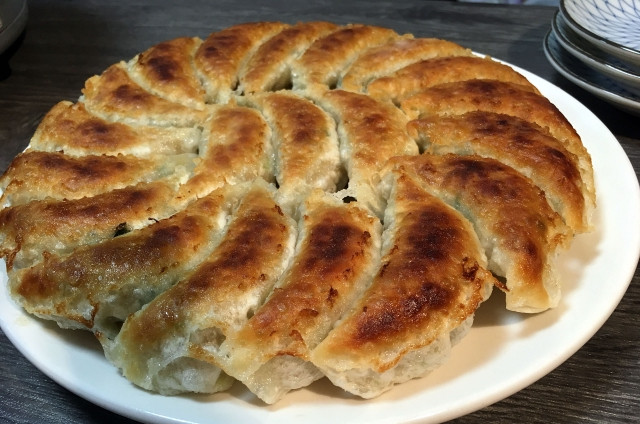
Enban Gyoza, or disk dumplings, are a specialty of Fukushima Prefecture. They are grilled in a circle on a frying pan. Each dumpling is small and easy to eat, and you can enjoy the crispy skin and slightly sweet pork and cabbage filling in one bite. Unlike Chinese dumplings, Japanese dumplings are usually grilled. Gyoza is one of the most popular Japanese foods, so when you visit Fukushima Prefecture, be sure to try enban gyoza.
Kitakata Ramen (Fukushima Prefecture)
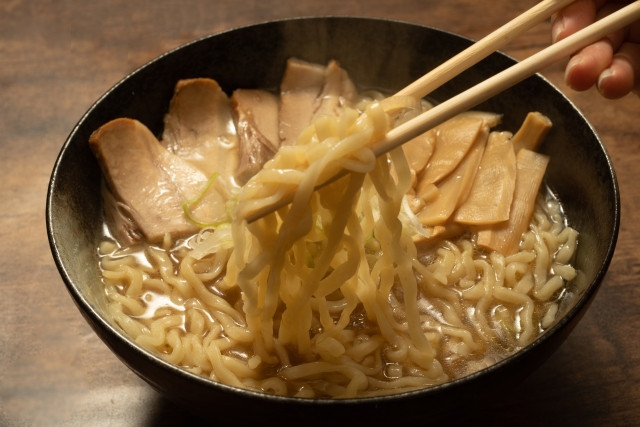
Kitakata Ramen is a local specialty ramen dish in Fukushima Prefecture, characterised by a light soy sauce or salt-based soup and flat aged noodles with a unique crimp and elasticity. Depending on the store, the colour and flavour may be completely different. Like gyoza, ramen is another Japanese food popular among foreign visitors. Kitakata Ramen is one of “Japan’s Great 3 Ramen (日本三大ラーメン)”.
The Tohoku Region’s Traditional Crafts and Specialty Products as Souvenirs
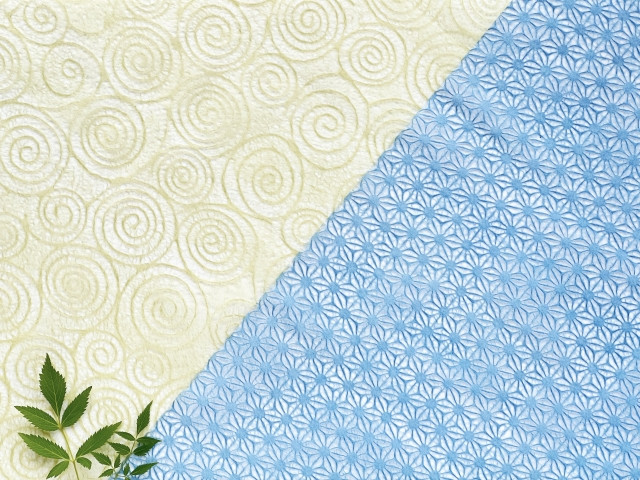
One of Tohoku’s charms is the many traditional crafts and specialty products that represent the region. There are also hands-on classes where tourists can experience making traditional crafts.
Tohoku’s Traditional Crafts
Tsugaru Kogin-zashi (Aomori Prefecture)
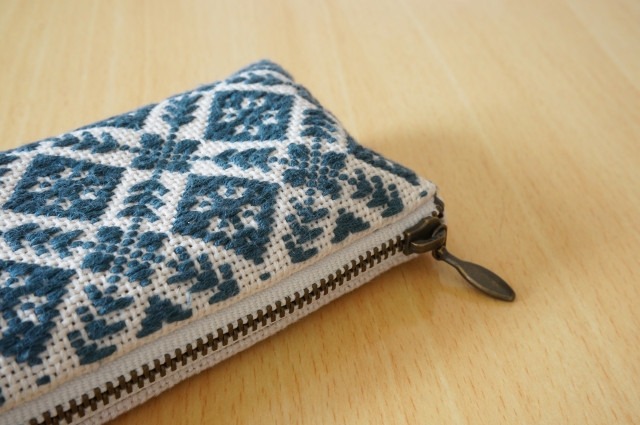
Tsugaru Kogin-zashi, which is a linen cloth embroidered with a geometric pattern called "modoko (モドコ)", is a traditional craft of Aomori Prefecture. The embroidery is made using a stitching technique called “sashiko (刺し子)” which is, along with “shonai sashiko” and “nanbu-hishi sashiko”, one of “Japan’s 3 Greatest Sashiko (日本三大刺し子)”.
During the Edo period, ordinary people were only allowed to wear hemp kimonos due to laws regulating expenditures. Therefore, people living in the Tsugaru region tried to increase their clothing’s heat retention and durability to survive the cold winter. One of the ways they discovered was by embroidering with cotton thread, and this was the beginning of Tsugaru Kogin-zashi.
In recent years, Tsugaru Kogin-zashi has been used not only for clothes, but also to make miscellaneous items and accessories due to its high artistic quality. It also makes for a good souvenir.
Odate Magewappa (Akita Prefecture)
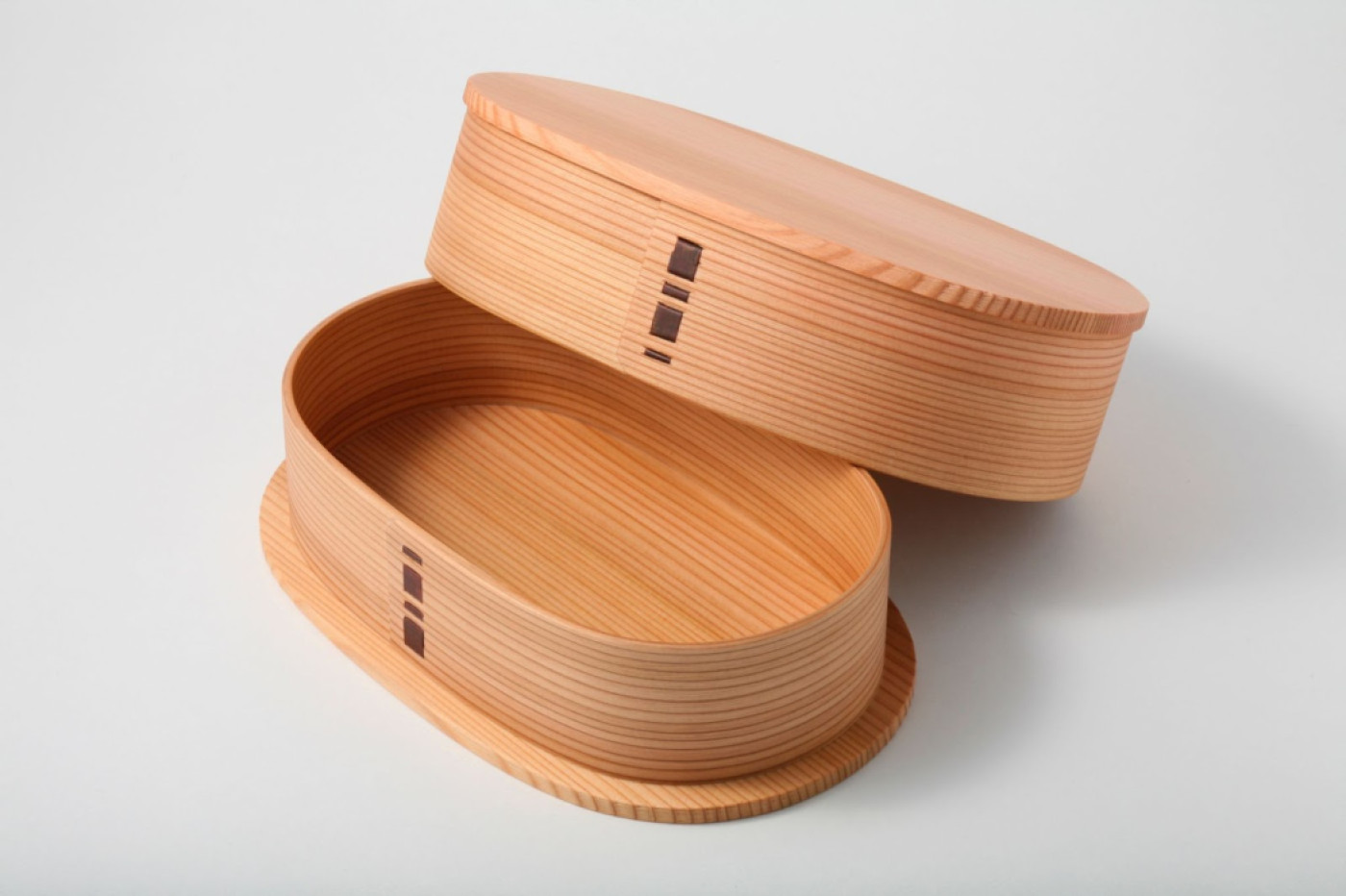
Magewappa is a box made by thinly cutting cedar and cypress wood and bending them into a cylindrical shape. In Japan, it is mainly used as a bento box. Magewappa is made all over Japan, but in Akita Prefecture it has been made as “Odate Magewappa” since the Edo period.
Odate Magewappa uses only naturally grown Akita cedar. Because the wood can only be lumbered in specific areas, Odate Magewappa is a luxury item that costs about 10,000 yen per piece. It's not something you can easily afford, but the quality is good, and it absorbs moisture better than plastic lunch boxes. It is a very popular item, especially among Japanese people, because rice kept in magewappa bento boxes stays sticky and moist even when cold. In Akita Prefecture, you can also experience making Odate Magewappa, so give it a try if interested.
Nanbu Ironware (Iwate Prefecture)
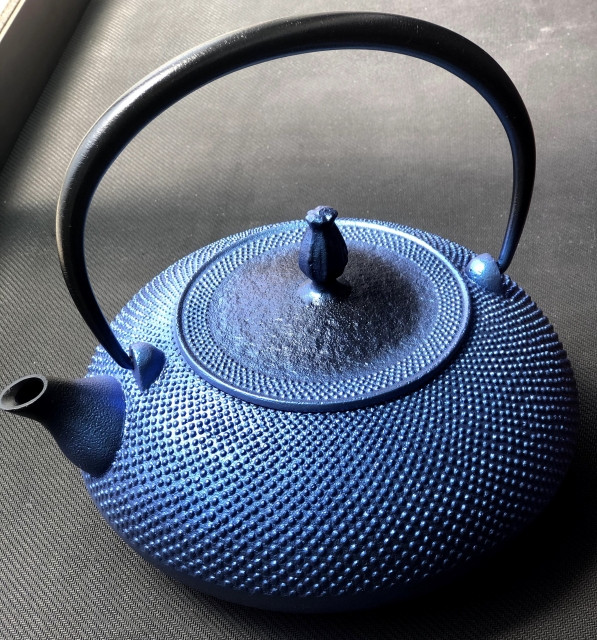
Nanbu Ironware, which has a long history, is a traditional craft made in the Mochioka and Oshu regions of Iwate Prefecture. During the Muromachi period (1336-1573), the city of Morioka had a thriving iron industry, and after having invited a kettle maker from Kyoto started making tea kettles. And thus, Nanbu ironware began to be used to make various items such as weapons and daily necessities.
Originally, black ironware with a solid feel were mainstream, but nowadays colourful ironware in turquoise blue, pure gold, and red are also being made. It is a popular item that is perfect as a souvenir.
Miyagi Traditional Kokeshi (Miyagi Prefecture)
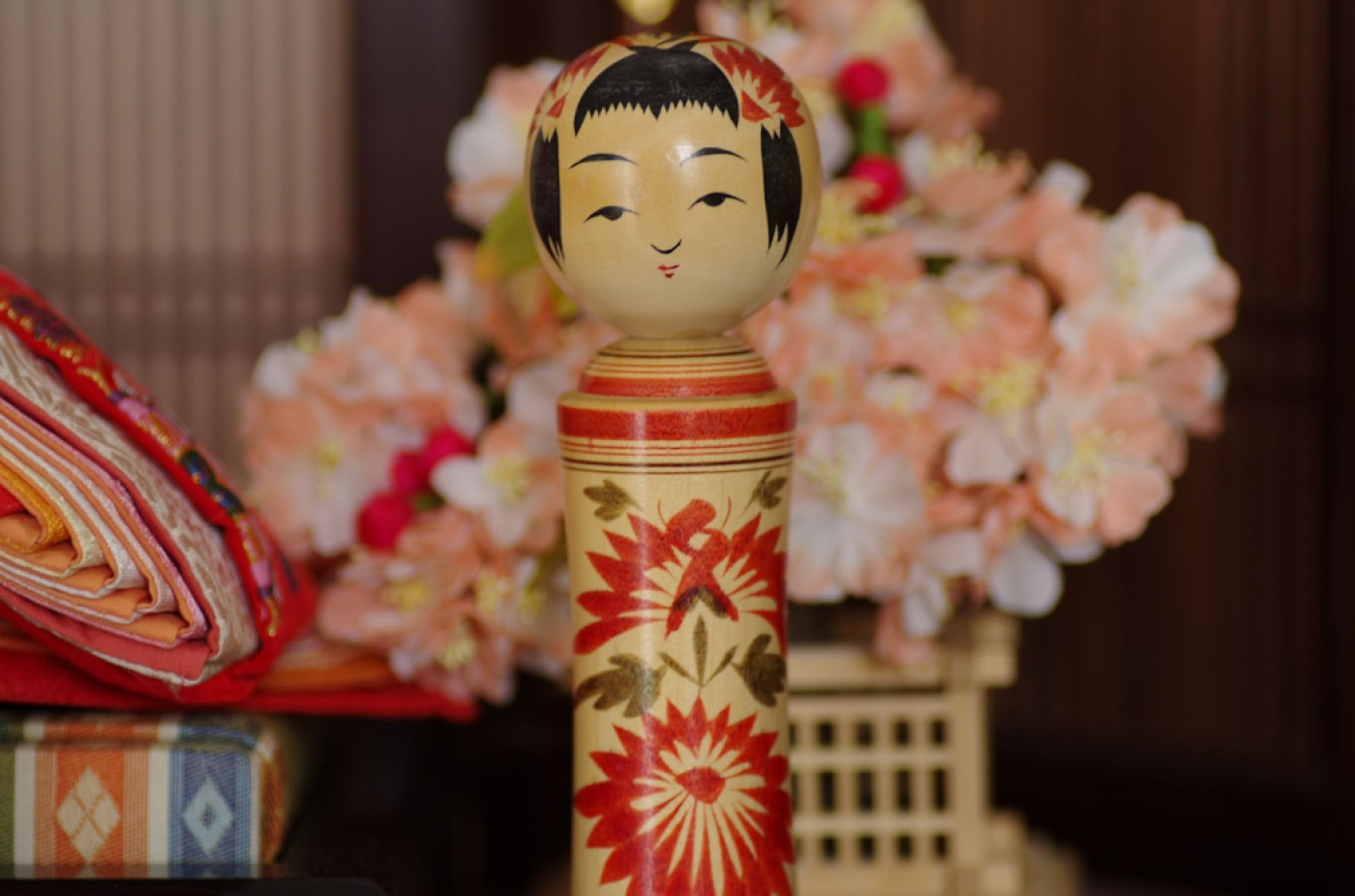
A child’s toy from a long time ago, traditional wooden Kokeshi dolls are also a traditional craft of Miyagi Prefecture. Types of Kokeshi made in Miyagi Prefecture include Togatta Kokeshi, Yajiro Kokeshi, and Naruko Kokeshi, each of which has a different design. They are often sold at souvenir shops and general stores, so if you are interested check those places out. In addition, in Miyagi Prefecture, there are shops that offer kokeshi painting experience for tourists. You can paint a design you like, or have one painted in your likeness.
Tendo Shogi Pieces (Yamagata Prefecture)
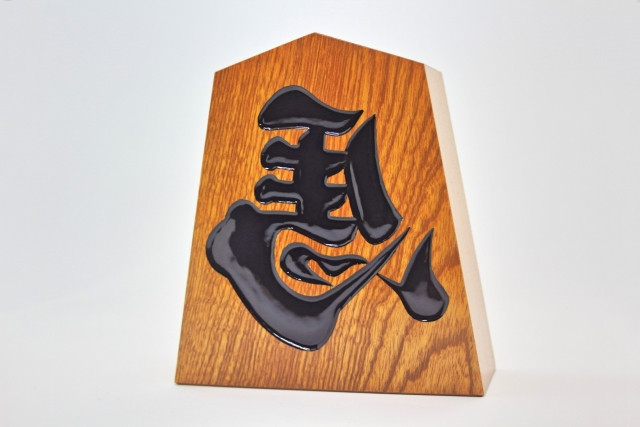
Yamagata Prefecture produces the most number of shogi pieces, Japanese chess pieces, in Japan. Tendo Shogi Pieces, which are a traditional craft of Yamagata Prefecture, began to be made at the end of the Edo period. Tendo Shogi Pieces range from inexpensive mass-produced pieces to high-end high-class pieces. There are also products like Shogi piece keychains which are excellent as souvenirs.
Aizu Lacquerware (Fukushima Prefecture)
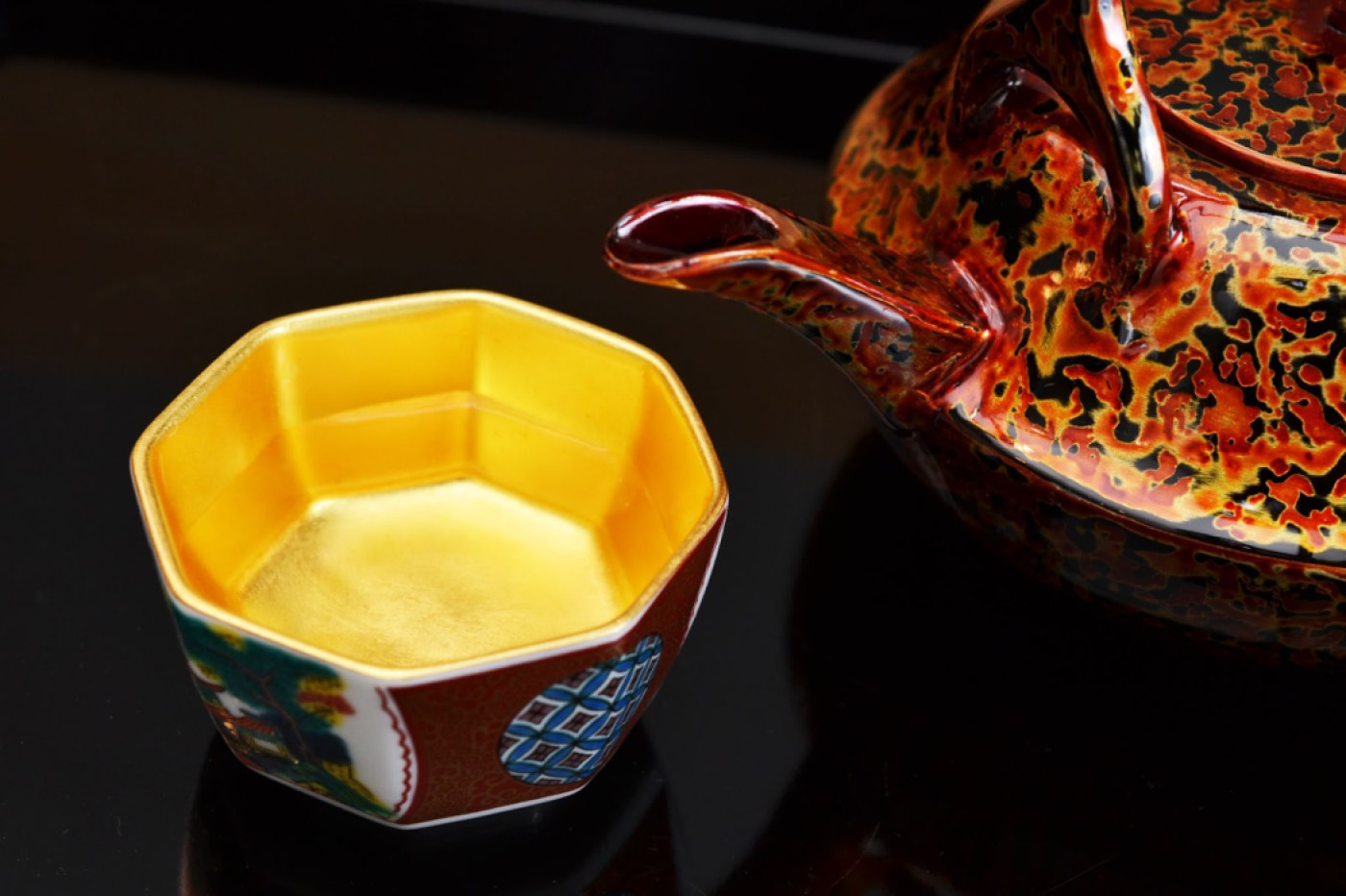
With a history of over 400 years, Aizu lacquerware is Fukushima Prefecture’s traditional craft. Aizu lacquerware developed in the Aizu region, where many lacquer trees were planted, attracting lacquerware craftsmen. Keshifunmakie (消粉蒔絵), in which fine gold dust is applied on top of a pattern drawn in lacquer, in particular is a technique that is representative of Aizu lacquerware. Aizu lacquerware, with its delicate beauty, is popular among foreign tourists. There are shops in Fukushima Prefecture where you can experience making Aizu lacquerware, so check them out if you are interested.
Tohoku’s Specialty Produce
Apples (Aomori Prefecture)
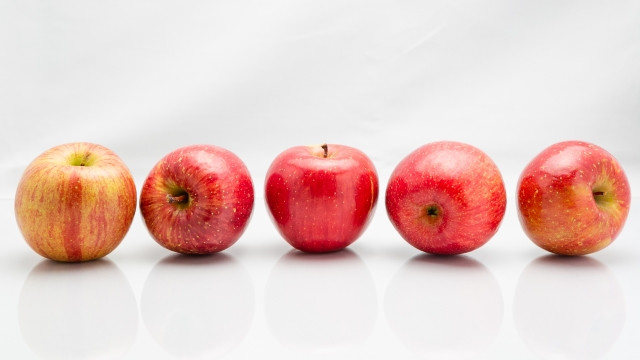
Aomori Prefecture is the largest producer of apples in Japan. Most of the apples you find in Japan are from Aomori Prefecture. Each type of apple has its own characteristics. There are apples that are grown for its nice fragrance, sweetness, crispness, and so on. Try the different types of apples there are, or go apple picking when you visit Aomori.
※ Aomori Prefecture, “データで見るりんご:国内・世界の生産量” [2022.4.27]
Akita Komachi (Akita Prefecture)

Akita Prefecture, which is one of the highest rice producers in Japan, is famous for its brand of rice called “Akita Komachi”. The most famous brand of rice in Japan is “Koshihikari”, but Akita Prefecture is unable to grow it due to its extremely cold climate. Therefore, “Akita Komachi” was developed so that delicious rice can be grown even in Akita. Akita Komachi rice, which is resistant to cold weather and has high tenacity and elasticity, is said to be delicious both freshly cooked and cold.
※ MAFF, “米生産量上位について”
Hops (Iwate Prefecture)
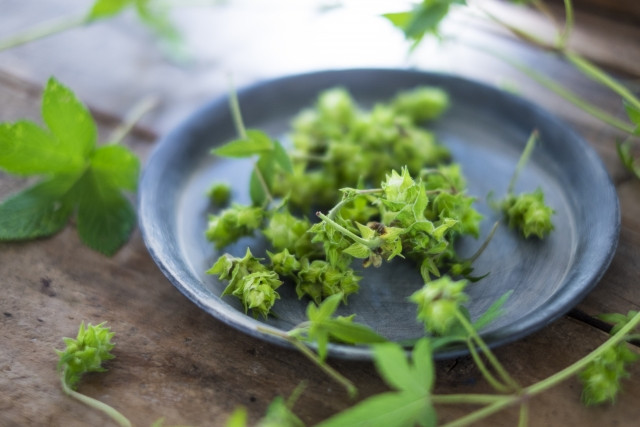
Iwate Prefecture produces the most hops, the raw material for beer, in Japan. Hop production is mainly done in Tono City where beer production is also done. Like beer or want to taste Japanese sake, Iwate Prefecture is a good place to go.
※ Iwate Prefecture, “岩手が一番”
Cherries (Yamagata Prefecture)
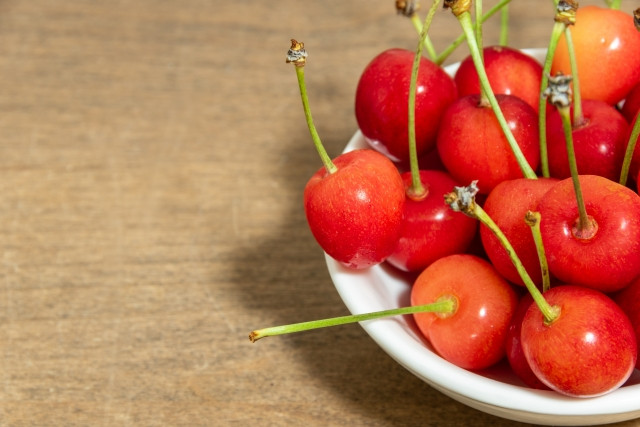
Yamagata Prefecture is the largest producer of cherries in Japan. About 70% of Japan’s harvested cherries are from Yamagata Prefecture. The climate in Yamagata, which is surrounded by mountains and has a large temperature difference between morning and night, helps to produce high quality and sweet cherries. The texture and taste is completely different from American cherries, so be sure to try them when you visit Yamagata Prefecture. You can also go cherry-picking around June and July.
Peaches (Fukushima Prefecture)

Fukushima Prefecture is a top-class producer of peaches in Japan. There are various species of peaches, including Akatsuki, Hatsuhime and Yuzora. Fukushima Prefecture has designated peaches as its “prefecture certified brand (ブランド認証産品)” and is making efforts to promote them throughout the country. Peaches are in season from June to September, so if the timing is right, you can experience picking peaches directly from the farm.
Famous Festivals in the Tohoku Region
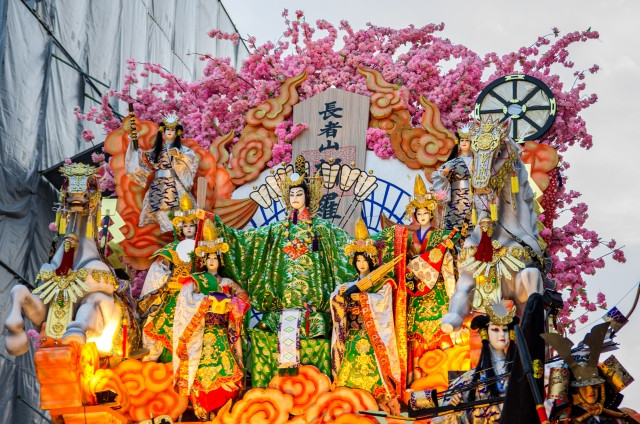
The Tohoku Region has 3 major festivals, known as “The 3 Great Festivals of Tohoku (東北三大祭り)" or “The 3 Great Summer Festivals of Tohoku (東北三大夏祭り)”, which carry on the culture and traditions of the region. All 3 of these festivals are held during the summer, thus its 2nd name, so if your trip coincides with one of them, we recommend checking it out.
The 3 Great Festivals of Tohoku are the Aomori Nebuta Festival, Akita Kanto Festival, and Sendai Tanabata Festival.
Aomori Nebuta Festival (Aomori Prefecture)
The Aomori Nebuta Festival features floats carrying large lanterns called Nebuta, which are paraded through the streets. Many tourists from Japan and abroad come to watch the dancers jump and leap around the floats to the sound of traditional Japanese musical accompaniment. A smaller version of the festival called the “Hirosaki Neputa Festival” is held in Hirosaki City in Aomori Prefecture.
Akita Kanto Festival (Akita Prefecture)

Photo Source: (C) Akita City Kanto Festival Executive Committee
The Akita Kanto Festival is a competition of strength and skill. A large number of lanterns are hung on a long pole called “kanto (竿燈)” to make it look like rice, and the pole carriers would need to balance them carefully to make sure they don’t fall. The Akita Kanto Festival is held as a prayer to ward off the bad things that attack us in summer, such as sleepiness and longing, and to pray for a good harvest of grain.
Sendai Tanabata Festival (Miyagi Prefecture)
The Sendai Tanabata Festival is a traditional festival with a history of over 400 years. In Sendai City every year, glittering bamboo decorations are displayed along its shopping streets. Tanabata is usually celebrated on July 7 in Japan, but in Sendai it is held in August following the lunar calendar.
If you are not sure what the Tanabata Festival is, we recommend reading Tanabata, A Legend of Star-Crossed Lovers and A Festival of Wishes to learn the significance of this celebration.
To Close
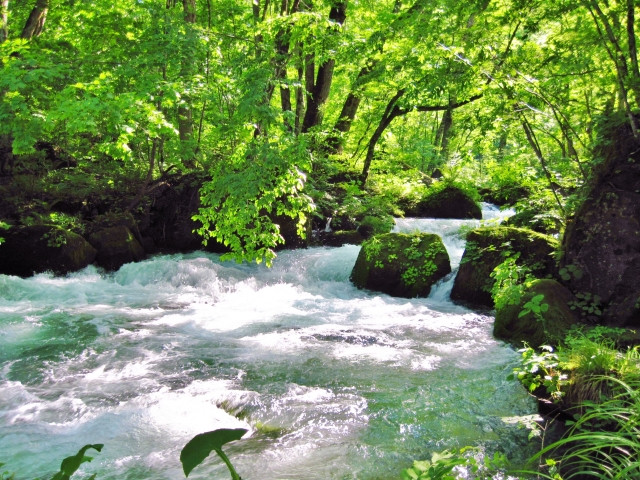
The Tohoku Region has many things to attract visitors to come, such as food, nature, and traditional crafts. Aside from what we’ve introduced here, there are many more famous foods and tourist attractions to discover. There are also places where you can visit on a daytrip from Tokyo, but that’s for another time.



















.jpg)












